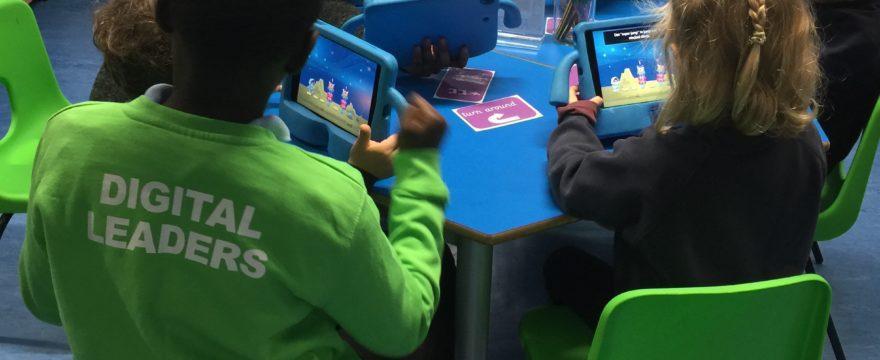
“Oh, a spider! Yes, it is a real spider. Take a picture, take a picture!” screamed the 7-year-old pupils in the yard of the Grazebrook Primary and Nursery School in London. Groups of pupils were looking for interesting things to photograph, iPads in hand.
The school had realised that digital devices and learning environments were motivating and improved learning results.
Every teacher hopes to be able to bring out every child’s learning potential at school.
Digital learning is one answer. Digital learning offers children a chance to be in the very heart of learning, to be heard, to share their skills, to take responsibility for learning schedules, to encourage others, and to give feedback both to themselves and others. The ownership of learning is transferred from teachers to pupils, and the pupils can choose themselves where, when and how to study.

The New Wave Federation, a community of three public schools, has invested in increasing digitality since 2012: learning results in English, mathematics and skills have increased greatly in a few years.
This huge improvement was not only due to the introduction of digital tools at school (technical skills) but also to the fact that digitality has offered increasing choices for the pupils (learning skills, social skills). The children decide themselves how to demonstrate their learning (different texts, videos, pictures, tables), how to work (in pairs, in groups, alone) and how to assess their own work (self-reflection, peer and group feedback, etc.).
Another factor contributing to the great learning results was that the teachers fully welcomed this new experiment and committed to a jointly developed vision, and the consistent pedagogic leadership of the headmaster supported the motivation and commitment of the teachers.
Pedagogical development had been considered in the pedagogical, physical and social structures of the school with empowering effects for all school community.
PHYSICAL: Every corner of the school was a positive inspiration for learning, inclusive on the level of mind and thought and invited the pupils to learn new things.
PEDAGOGICAL: content themes changed every six weeks, and the teachers planned and prepared them in the school facilities and put together appropriate learning material (games, digital apps, other material) together with the pupils. Digital and traditional learning took turns, depending on the interest of the pupils.
SOCIAL AND PSYCHOLOGICAL: Interaction between the teachers and the entire work community was open and positive. Genuine interest in utilising the skills and skill potential of the other teachers in the community was evident in the way they worked together and the encouraging working attitude. Similarly, encouraging pupils, giving them space and bringing out their skills as well as peer-learning (digital leaders) were part of everyday interaction. People had time for each other!
This visit made us ask ourselves: why wouldn’t teachers commit to working together, planning the learning together with the children and colleagues and including digital learning environments and learning opportunities as part of learning motivation? If the children feel at home when using digital devices, these could be naturally and comprehensive integrated in the learning process.

Pedagogical management of the reform is important – a common vision to lead the way!
The digital world has reformed the concept of information and learning and didactics. This change should be managed on many levels: In a modern school, this is evident in the vision developed in cooperation between the work community and the parents and in the practical procedures developed to support its implementation. The teachers commit to cooperating with colleagues. They enable the use of digital devices in learning at an early stage of the school path, support the individual path of the pupils, encourage the pupils to learn new things, support comprehensive learning by introducing larger entities (term-long themes), share their knowledge, participate in public discussion to develop the school and agree to be learners as well as teachers.
The secret to learning lies in the power of freedom of choice: it is motivating to be able to decide yourself what you want to learn and how you want to show your skills. Suitable freedom of choice and a rich learning environment commit each individual to excel.
Thank you to IlonaIT and the Finnish teachers for this wonderful school visit in connection with the BETT Show.
